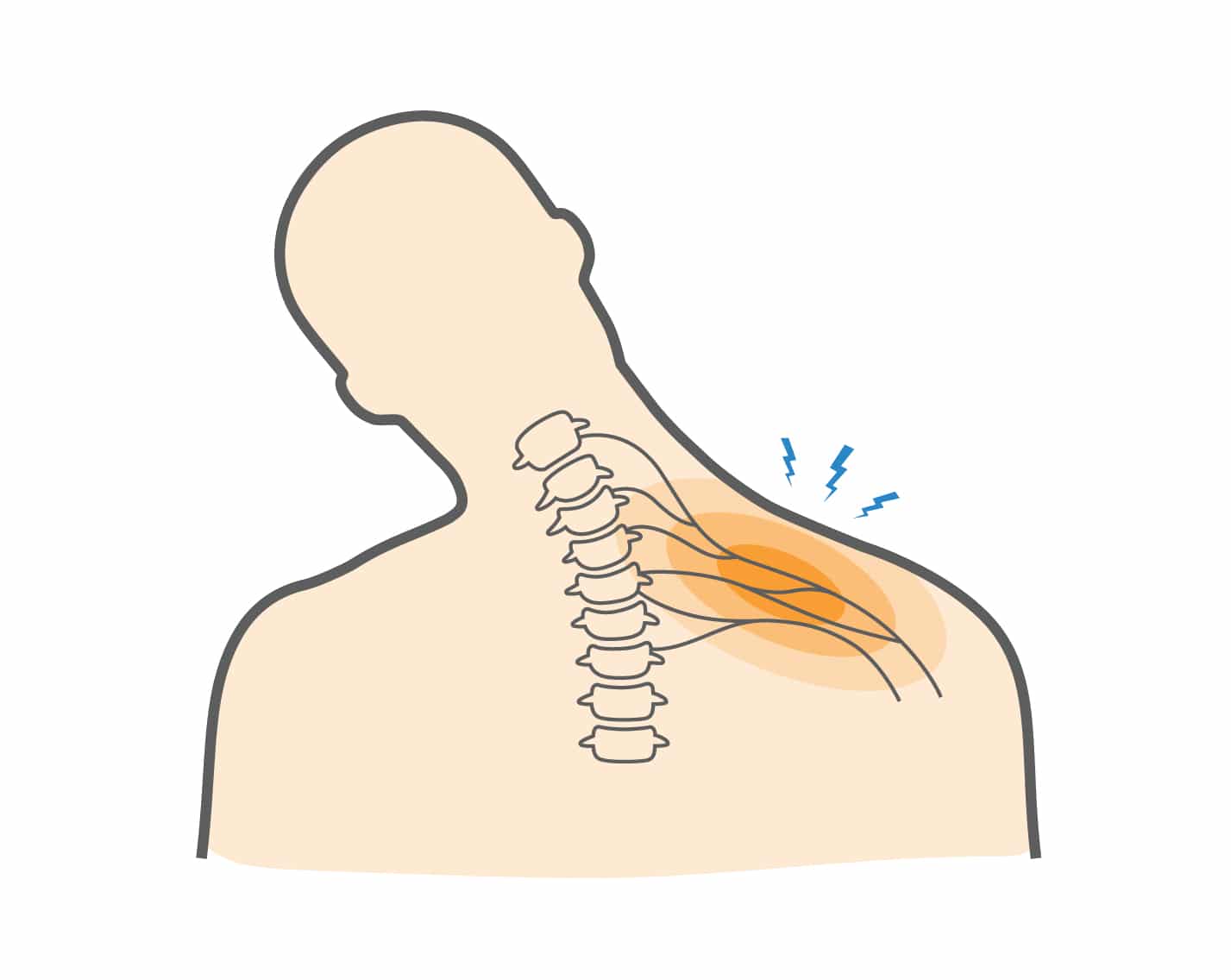A stinger, sometimes also called a burner, refers to an injury to the network of nerves in the neck and shoulder. The names describe the stinging or burning sensation that people often feel passing from their shoulder to their hand when they have this injury. Usually, it’s caused by trauma to these nerves, called the brachial plexus. This injury is common among athletes who play contact sports, like football or rugby. Fortunately the injury is usually not serious, and symptoms tend to resolve quickly.
Stinger Causes, Symptoms & Treatment Options
A stinger, sometimes also called a burner, refers to an injury to the network of nerves in the neck and shoulder. The names describe the stinging or burning sensation that people often feel passing from their shoulder to their hand when they have this injury. Usually, it’s caused by trauma to these nerves, called the brachial plexus. This injury is common among athletes who play contact sports, but fortunately this injury is usually not serious, and symptoms tend to resolve quickly
Overview
Overview

What causes Stinger?
A common injury to the brachial plexus occurs when the head is forcefully pushed downward and sideways. This force can pinch the brachial plexus, causing the injury. This often happens due to a fall or collision between players on the field. Football players are particularly at risk. It’s estimated that half of all college football players have had this injury.
Stinger injuries are most common in these sports:
- Hockey
- Football
- Rugby
Symptoms
This injury generates a stinging sensation, like an electric shock. This is usually limited to one arm. Symptoms may last only seconds or minutes, but sometimes longer. Common symptoms also include:
- Burning sensation
- Numbness
- Muscle Weakness
- Arm feels “dead” or limp
When to see a doctor
If your symptoms don’t resolve quickly, consult with your doctor. This is because if your symptoms do not resolve within a short time, you most likely do not have a stinger, but a different type of injury to your neck or the nerves of your arm. This can be more serious, and therefore consultation with a physician is extremely important.
A physical exam will be conducted to assess areas of weakness. Your doctor will also order x-rays of your neck. Sometimes imaging tests, such as a magnetic resonance imaging (MRI) test, will be ordered to rule out other, more serious problems.
Non-operative treatment
Rest is the best treatment for stingers and burners. Athletes must refrain from sports activity until their symptoms completely resolve. Conservative treatments also include:
- Nonsteroidal anti-inflammatory drugs (NSAIDs), such as ibuprofen and naproxen, to help relieve pain
- Physical therapy exercises to improve range of motion and strengthen muscles
Try these exercises to help address your condition:
Below is a PDF of the Exercise Program
Surgical Treatment
Surgery is not needed for a stinger injury. However, sometimes athletes sustain other injuries, such as a spinal cord injury that may require surgical treatment. Your doctor can advise you on the best course of action for you.
Recovery
Athletes should not participate in contact sports until their symptoms completely resolve. Sometimes this can take a matter of minutes, or it may take days. This means that before you return to play, you must have full, painless range of motion of the neck and shoulders, as well as no numbness, tingling, or weakness in your arms.
Contact sport athletes like football players may consider wearing protective padding to help prevent subsequent stinger injuries. If you get stingers multiple times, it is very important to see a sports medicine physician to rule out other causes of these symptoms.
GET BACK TO WHAT YOU LOVE. FASTER
Sources
https://orthoinfo.aaos.org/en/diseases–conditions/burners-and-stingers/
https://www.aafp.org/afp/1999/1101/p2035.html
https://www.sportsmd.com/sports-injuries/back-neck-sports-injuries/stingers-burners-brachial-plexus/
https://www.mayoclinic.org/diseases-conditions/brachial-plexus-injury/symptoms-causes/syc-20350235

